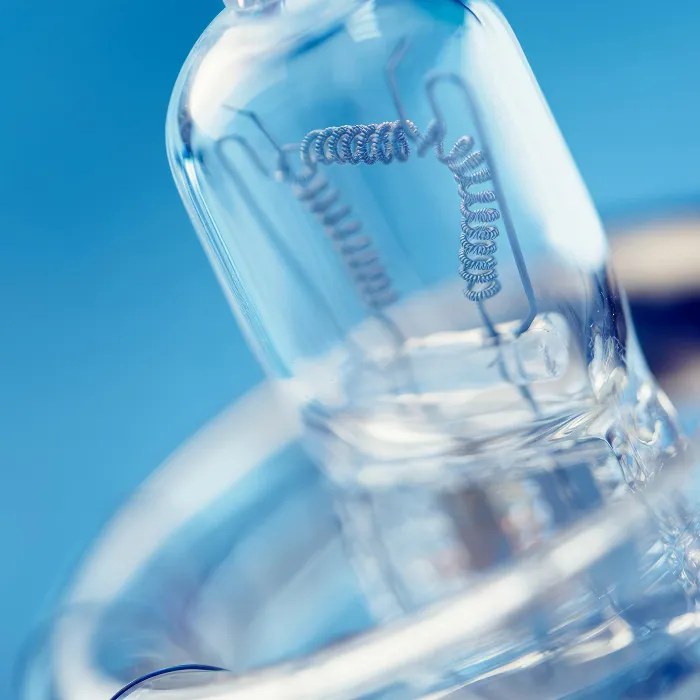Here is an overview of the individual chapters:
Part 1 - What is "the" correct lighting?
Part 2 - Three reasons why lighting technology should be used
Part 3 - Light sources relevant for professional photography (?)
Part 4 - Requirements for professional flash systems
Part 5 - Flash systems for indoor and outdoor use?
Part 6 - Alternatives?
Part 7 - Camera settings when working with studio and mobile flash systems
Part 8 - Practical tips for working with studio and outdoor flash systems
Part 9 - Professional indoor lighting
Part 10 - Professional outdoor lighting
As was made clear in the previous tutorial, in most cases flash systems are best suited for creatively setting the light when tackling photographic tasks. They best meet the requirements of professional and dedicated photographers.
The following points should be fulfilled in order to work optimally with artificial light.
4.1 Color temperature stability
The color rendition should be controllable and reproducible; from exposure to exposure and over the entire control range. This is important so that when several lights are used, only the light intensity (depending on the setting) is different and not the color temperature.
4.2 Radio controllable
A flash system should not only be able to be triggered by radio, but should also offer a remote control function so that the power can be controlled not only overall, but also individually for the different flash heads (if possible in tenths of a f-stop increments). Often, however, an otherwise identical flash system with remote control and triggering function via radio costs a horrendous amount of money, which is why it can be much more sensible to do without the built-in remote control and triggering function and instead buy a radio triggering system from a third-party manufacturer. In professional practice, for example, the radio triggers from Pocket Wizard have proven themselves very well.
Figure 4.1: The pleasantly compact radio trigger from Hensel not only triggers the Porty battery generator (and some other Hensel devices), but also regulates the power and controls the modeling light (full, off and proportional switching). Like all devices, it also has a test flash trigger button and enables the control of different devices (groups) via the 3 channels (+ All function).
(Photo © 2013: Jens Brüggemann - www.jensbrueggemann.de)
Figure 4.2: The "Pocket Wizard Plus III" radio triggers are the successors to the tried and tested "Plus II". They now have 32 channels and enable the simultaneous triggering of a camera and the flash generator. The range is specified by the manufacturer as up to 500 meters. In repeater mode, a "Plus III" can be used as an amplifier and increase the radio distance. The "Plus III" devices are backwards compatible with the "Plus II" devices. A device that can be used as both a transmitter and a receiver costs around 149 euros gross. (Status: April 2013)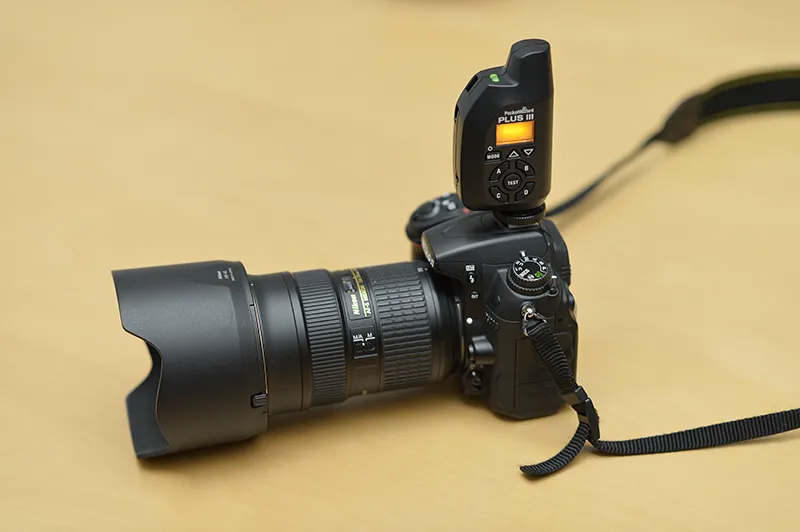
(Photo © 2013: Jens Brüggemann - www.jensbrueggemann.de)
4.3 Daylight temperature
The color temperature should correspond to medium daylight. This is 5,500 Kelvin. This is important for mixed light shots, i.e. when artificial light is used in rooms where daylight also plays a role. This is the case, for example, with interior shots in hotels: in advertising photos, the daylight streaming in should always be included in order to achieve the impression of bright, light-flooded rooms.
Figure 4.3: Anyone taking fashion photos for the manufacturer to use in advertising must make sure that the light used really is daylight temperature (5,500 Kelvin). Otherwise, color distortions will occur, which would then cause annoyance among customers who, for example, want a bag in a very specific shade - as seen in the brochure.
(Photo ©: Jens Brüggemann - www.jensbrueggemann.de)
4.4 Stabilized (flash) intensity
This guarantees the same amount of light at identical settings. Fluctuations in intensity, on the other hand, make reproducibility impossible.
Figure 4.4: Constant power output is particularly important in product photography, as is color temperature stability.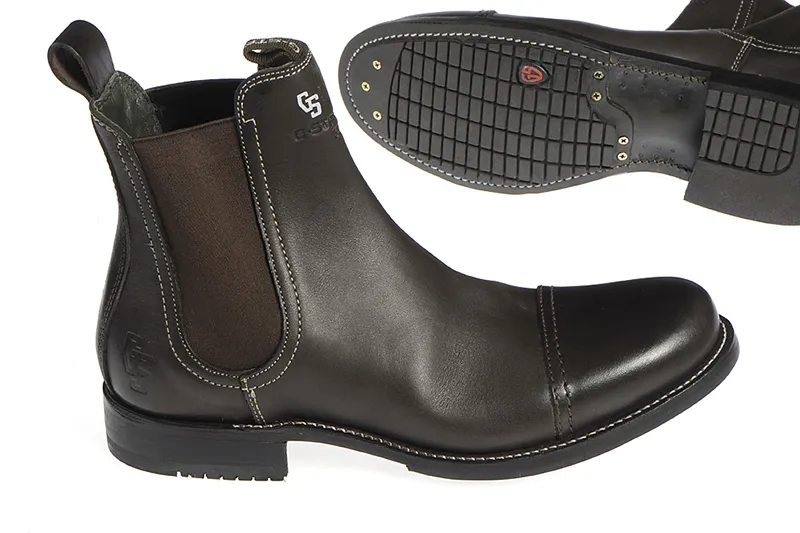
(Photo ©: Jens Brüggemann - www.jensbrueggemann.de)
4.5 The widest possible control range
Only then can one system be used for many different photographic tasks. For portraits, for example, you often only need very little light because you want to shoot with an almost open Blender in order to capture only the eyes in focus (and the rest of the head/body out of focus). (The power required here is often less than 10 watt seconds).
Figure 4.5: If you want to take pictures with only a very small depth of field range, you need a flash unit that can also flash with very little power. A large control range, for example over 10 f-stops, leaves this option open to the photographer.
(Photo ©: Jens Brüggemann - www.jensbrueggemann.de)
For interior shots, on the other hand, you usually need as much light output as possible so that the entire subject is in focus. (The power required here is often in the order of up to several thousand watt seconds).
Figure 4.6: A large control range ensures that the photographer can handle as many different tasks as possible with just one flash unit. It also allows the most precise (finest) light settings with different lights. The control range is specified in f-stops. Based on the international standard, the maximum flash output of the generator is specified as 10.
The output can be adjusted downwards from this. With this generator, which has a maximum output of 1,600 watt-seconds (joules), I can regulate down to 3.1 watt-seconds (joules) (here with light connection 1). The LED displays here show the f-stops, while the illuminated LCD display shows the power values in watt-seconds (joules).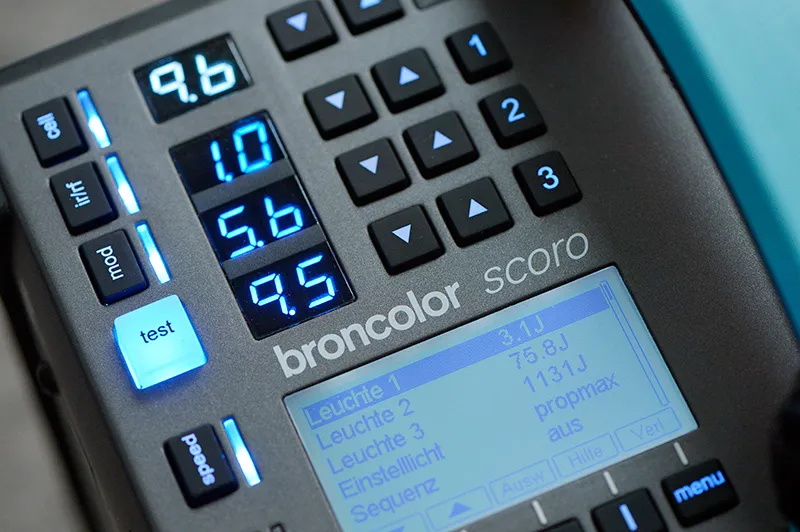
(Photo © 2013: Jens Brüggemann - www.jensbrueggemann.de)
Along with a large control range, the option of "spreading" is also important. This means that the flash heads on the generator can be used with the greatest possible power differences. A few years ago, this was not possible. Newer devices, on the other hand, can be used with large power differences between the flash heads used. The spread can be clearly seen in the picture above: While light 1 is only used with 3.1 watt seconds (joules), light 3 is used with 1,131 watt seconds (joules) (i.e. with 364 times the power!)
4.6 Strong modeling light
If you want to set the light precisely and creatively, you need to make sure you buy a powerful modeling light. This is the only way to precisely assess the light pattern of the various flash heads and the light shapers used before taking the picture. A strong modeling light also helps the camera's autofocus to focus faster and more reliably.
If you are using the flash unit on location where other light is available (for example daylight shining through the windows), the strongest possible modeling light is even more important.
For example, 650 watts of modeling light may seem excessive as long as you are in a dark (or darkened) photo studio. However, if you take photos using the flash system in rooms where there is a lot of daylight, you will quickly realize that the modeling light - seen in relation to the strong daylight - no longer seems so strong.
Figure 4.7: Here you can see a 650 watt halogen lamp used as a modeling light for a studio flash (broncolor Pulso F). It is enclosed by the omega-shaped flash tube. The modelling light generates an enormous amount of heat in continuous operation. Technicians have to take this into account when developing the light shapers to prevent fires. A "self-construction" made of non-fireproof materials can therefore be dangerous at close range! Incidentally, if the photographer forgets to remove the plastic protective cap from the flash head before switching on the modeling light (or connecting the flash head to the generator when the modeling light is switched on), ... (Photo ©: Jens Brüggemann - www.jensbrueggemann.de)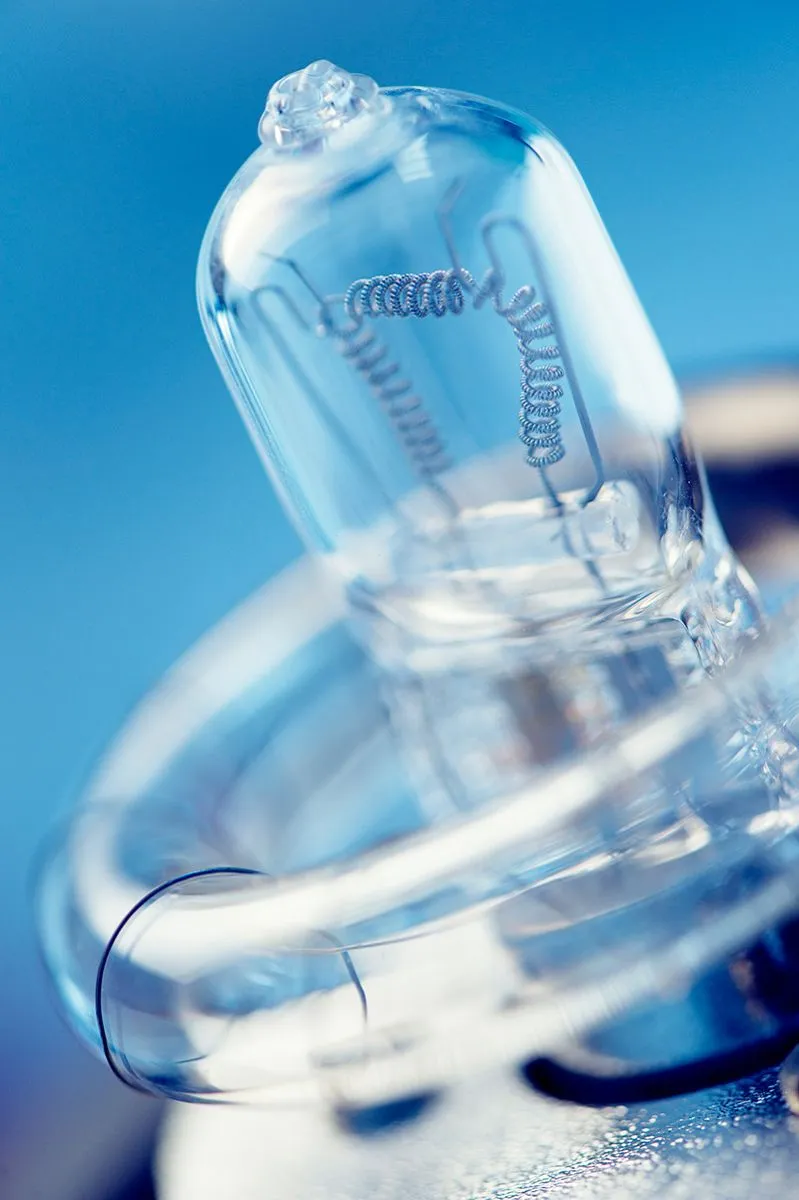
Figure 4.8: ... then it happens within a few seconds (here it was an estimated 10 seconds with a 650 watt modeling light) that the plastic protective cap starts to melt. A mistake that has certainly happened to every photographer (at least once)! If I had only noticed the mistake another 10 seconds later, the protective cap would have melted so much that it would have wrapped itself around the protective glass of the flash head and probably rendered the protective glass, flash tube and modeling light unusable. Fortunately, melting plastic smells terrible, so the photographer quickly realizes that there is something wrong with the flash head (and can then react quickly to prevent the worst).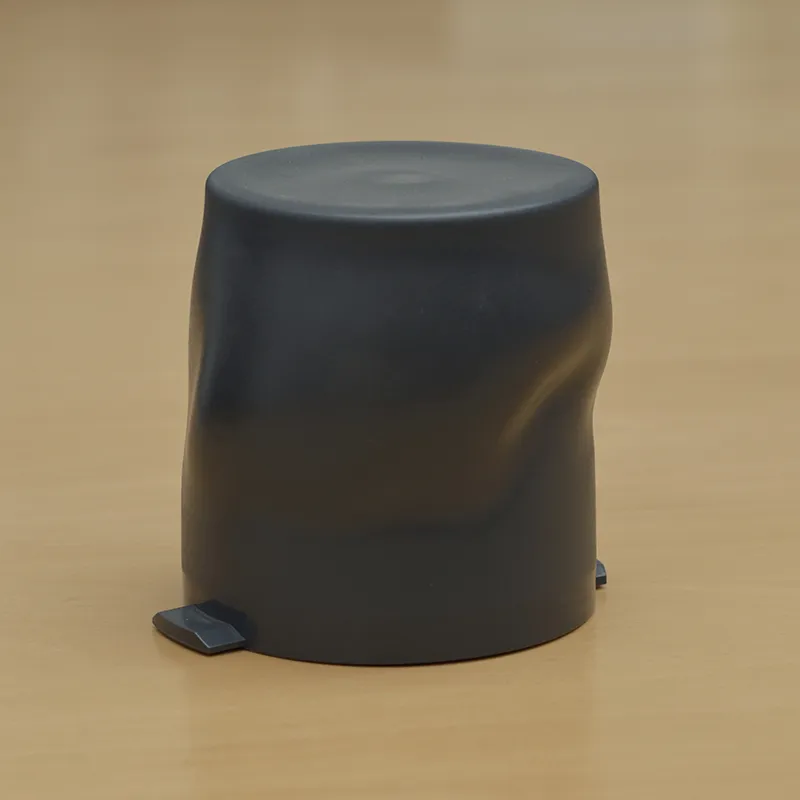
(Photo © 2013: Jens Brüggemann - www.jensbrueggemann.de)
4.7 Ease of use
This includes good reproducibility of all settings. If you want to earn money with photos, many features of modern, high-quality flash systems are not a luxury, but a necessity in order to be able to manage the photographic workflow efficiently. It is also essential to reduce operating time, avoid incorrect results and prevent damage caused by operating errors. Simple, logical operation is important in order to quickly become familiar with the system, which is particularly important for assistants who are used occasionally and have not worked with the system in the past.
Figure 4.9: In the hustle and bustle of a photo shoot, where you want to concentrate fully on the model, it is a great advantage if the flash system can be operated quickly and easily.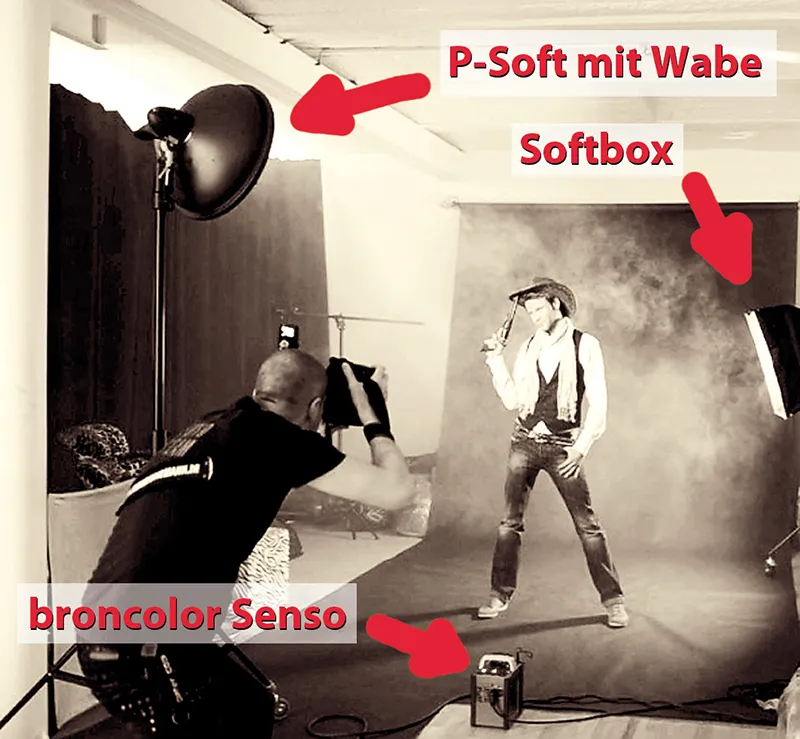
(Photo ©: Jens Brüggemann - www.jensbrueggemann.de)
Figure 4.10: Complicated, cumbersome operation, including changing the light shapers, is annoying and unnecessarily slowing down.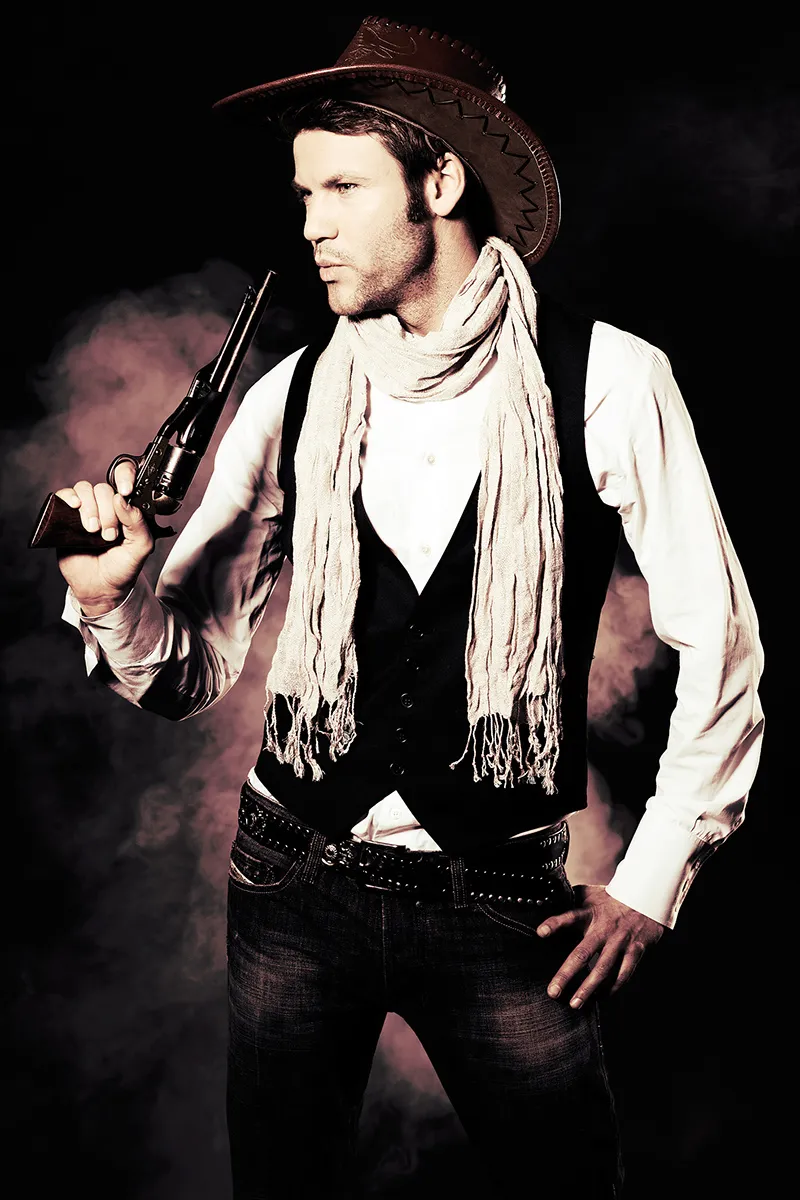
(Photo © 2012: Jens Brüggemann - www.jensbrueggemann.de)
4.8 Extensive range of light shapers
Similar to cameras, where the lenses are important for the design, light shapers are crucial for different lighting characteristics. A large selection of light shapers is therefore eminently important in order to set the light creatively and to be able to master different photographic tasks. But not only is a large selection of different light shapers necessary, the quality of these attachments (they shape the light) is also important.
For example, take a look at the light pattern of two standard reflectors from two different manufacturers (aimed at the same distance on a white wall): You will be amazed that there are differences in the uniformity of illumination with something as simple as a standard reflector! The ease of set-up (of softboxes, for example) is also an important criterion for photographers who frequently shoot on location and therefore value a simple set-up. The more complicated the setup, the more "annoying" it is, which is not exactly good for the photographer's nerves, especially when preparing for a job ...
Figure 4.11: Each light shaper provides a different light characteristic. In order to determine which light shapers are best suited for certain photographic projects, you can at least borrow the most important ones from some professional photo stores. In most cases, the rental fees are even offset against the subsequent purchase of new equipment. So: Just try them out first! Because even with light shapers, quality doesn't come for free.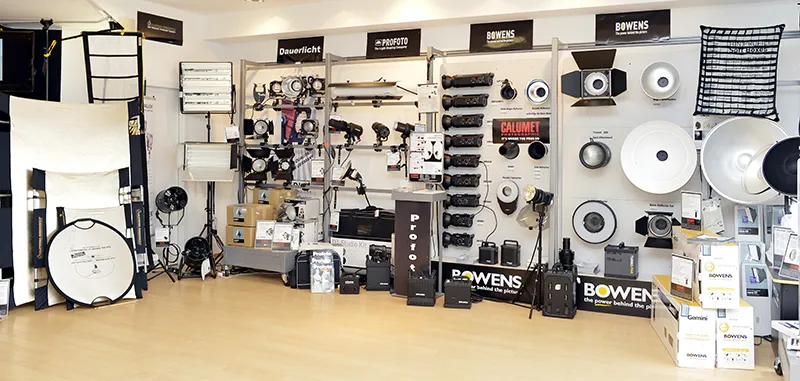
(Photo © 2013: Jens Brüggemann - www.jensbrueggemann.de)
Figure 4.12: Softboxes are particularly popular with beginners. These provide a soft light characteristic. The closer the softbox is to the photographed object, the more blurred the resulting shadow becomes (in contrast to the hard demarcation of normal reflectors, for example). Qualitative differences are noticeable in the handling during set-up, in the durability or in the uniformity of the light distribution.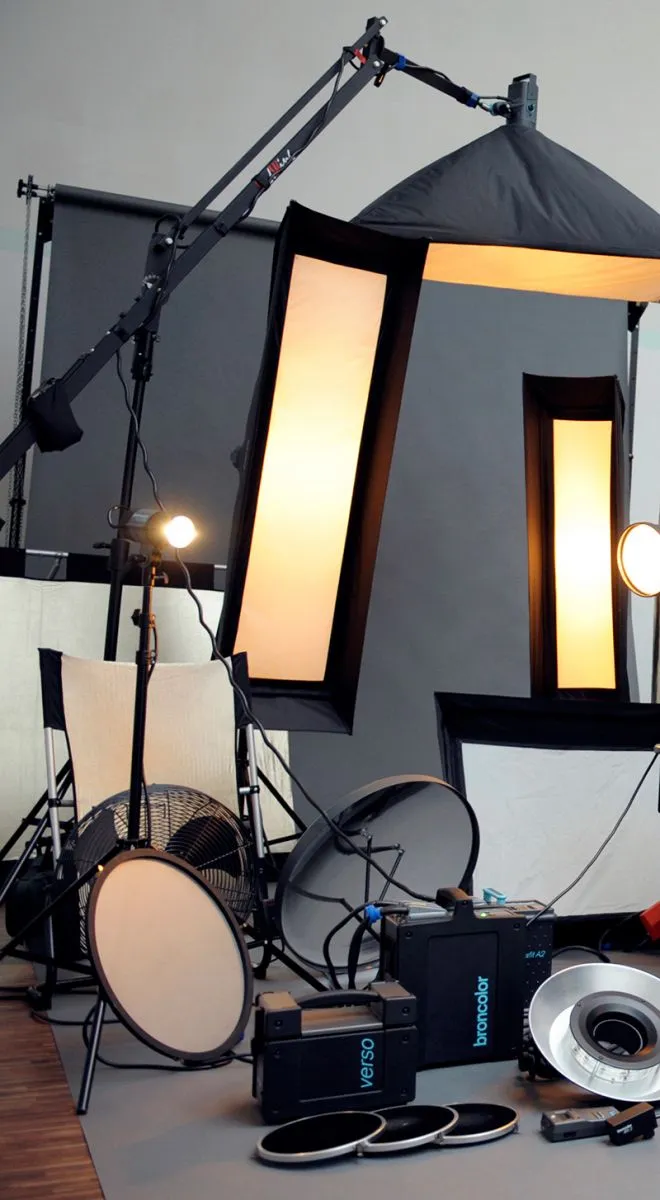
(Photo ©: Jens Brüggemann - www.jensbrueggemann.de)
4.9 Durability and quality
Robustness and durable construction (for example, the type and dimensions of the capacitors used in flash systems also play an important role) of the lighting technology guarantee a long service life. The charging time of the capacitors, which are exposed to strong temperature fluctuations during charging and discharging, also determines the service life. What good is a cheaply purchased flashing system if it gives up the ghost after just two years?
Figure 4.13: Robustness and reliability are among the most important features of professional flash units. It would be disastrous if the flash system suddenly failed on a photo job outside the big cities! The Profoto Pro-B4, an absolute top unit, is one of the most modern and reliable outdoor generators. It is also suitable for heavy-duty use in the racing sector. This is one of the reasons why it is the first choice of professional photo dealers (and rental stations) such as Calumet.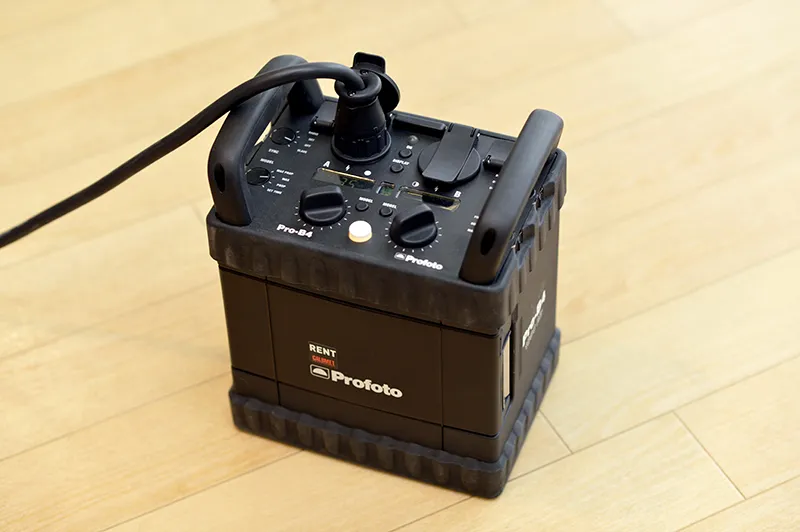
(Photo © 2013: Jens Brüggemann - www.jensbrueggemann.de)
4.10 Electrical safety
Are all national (and, if applicable, international) safety regulations met? Is the housing robust and impact-resistant or does accidental dropping lead to damage that makes operation a safety risk because electrically critical elements have become deformed and can now cause short circuits?
Note Hands off old, damaged or cheaply produced flash units!
Figure 4.14: Cheap flash units not only have a limited range of functions, but are often simply classified as "dangerous". Participants in my workshops and coaching sessions have already brought me flash units that I refused to plug into the socket because I realized as soon as I unpacked the devices that they would not pass any safety checks. Avoid buying very old, battered or cheaply built appliances, which can be life-threatening in the worst case.
4.11 Durable, powerful flash tubes
Flash tubes are wearing parts. The more durable they are, the easier it is on your wallet. This means that quality flash tubes, which are slightly more expensive than cheap versions, can ultimately be cheaper (over a longer period of time). "Buy cheap, buy twice!"
Figure 4.15: Flash tubes are attached to the front of the flash head. They can be replaced by the user (photographer) himself. To do this, the old (broken) flash tube is removed and the new one is inserted into the holder provided. On this model, the flash tube is attached using a three-point plug-in system. Make sure that you do not touch the flash tube with your bare hands, because greasy residues on the flash tube will destroy it, as the grease burns into the glass of the flash tube when it is heated up (during fast flashes or flashes with high power output).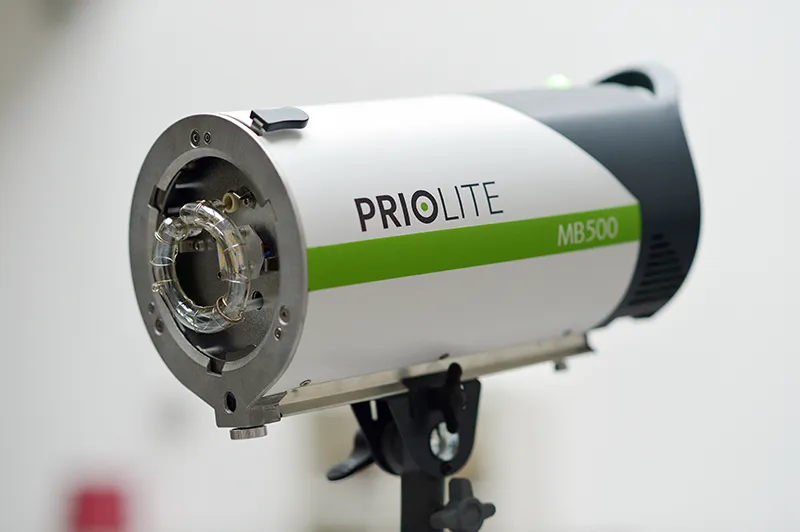
(Photo © 2013: Jens Brüggemann - www.jensbrueggemann.de)
4.12 Individual power distribution
Anyone opting for a generator-based flash system should make sure that all (preferably 3 or 4) light outputs can be controlled individually. Only then can you creatively set the light according to your own ideas with one device (a generator). You are then no longer restricted by the technology, but have complete freedom when it comes to light control. Compact flash units, on the other hand, have an individual power distribution by definition:
Figure 4.16: With compact flash systems, each compact flash unit is plugged into the socket, because the technology, i.e. the capacitors and electronics, is in each individual unit. Each compact flash unit can be used independently. If you only need one flash, only take one compact flash unit with you. Each compact flash unit can be individually controlled.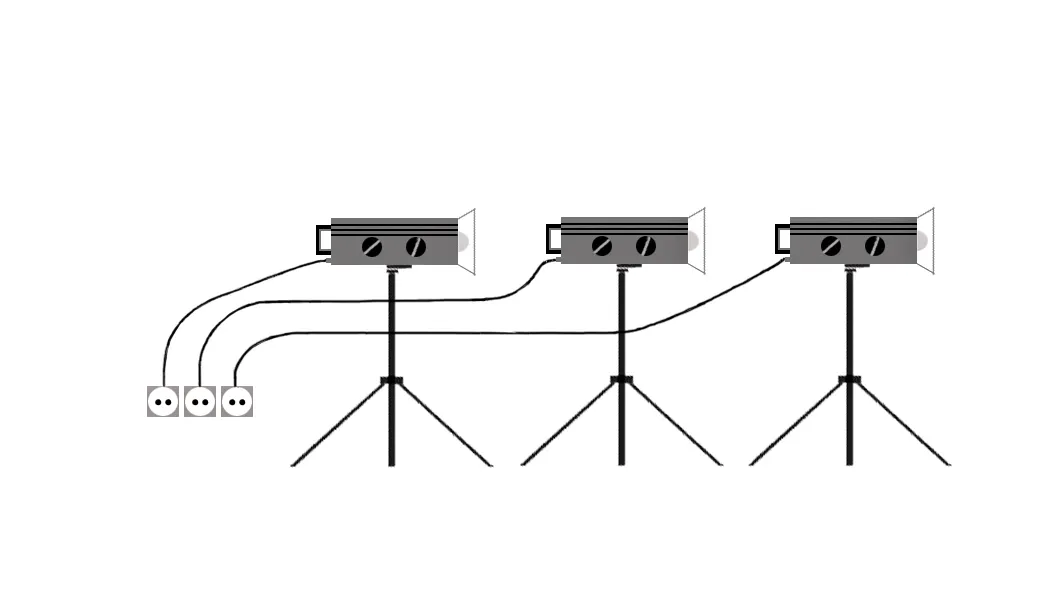
Figure 4.17: Generator flash systems require a generator in addition to the flash head. Even if you only need one flash, the (often heavy) generator has to be carried along. On the other hand, the flash heads are lighter, which is why they used to be used primarily for positions at greater heights, for example under the ceiling in the ceiling track system.
The flash heads actually only consist of a holder for the flash tube and modeling light as well as a fan. The technology, on the other hand, is in the generator, which is generally more powerful and versatile than compact flash units. Generator flash units usually enable a faster flash frequency, stronger modeling light and various special functions (such as strobe flashes). However, generator flash units also cost more than compact flash units.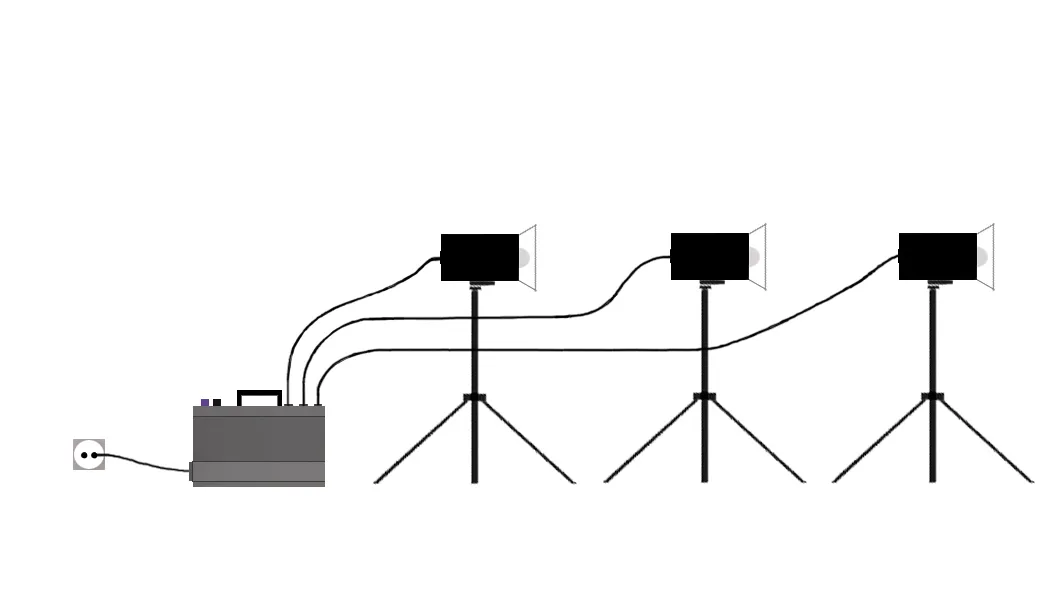
Figure 4.18: Externally, the flash heads of generator systems hardly differ from those of compact flash systems. Shown above is the broncolor unilite flash head, which has to be connected to a generator when in use because it has neither capacitors nor any control options. Below is the Genesis 400 compact flash unit from Calumet, which can be used on its own.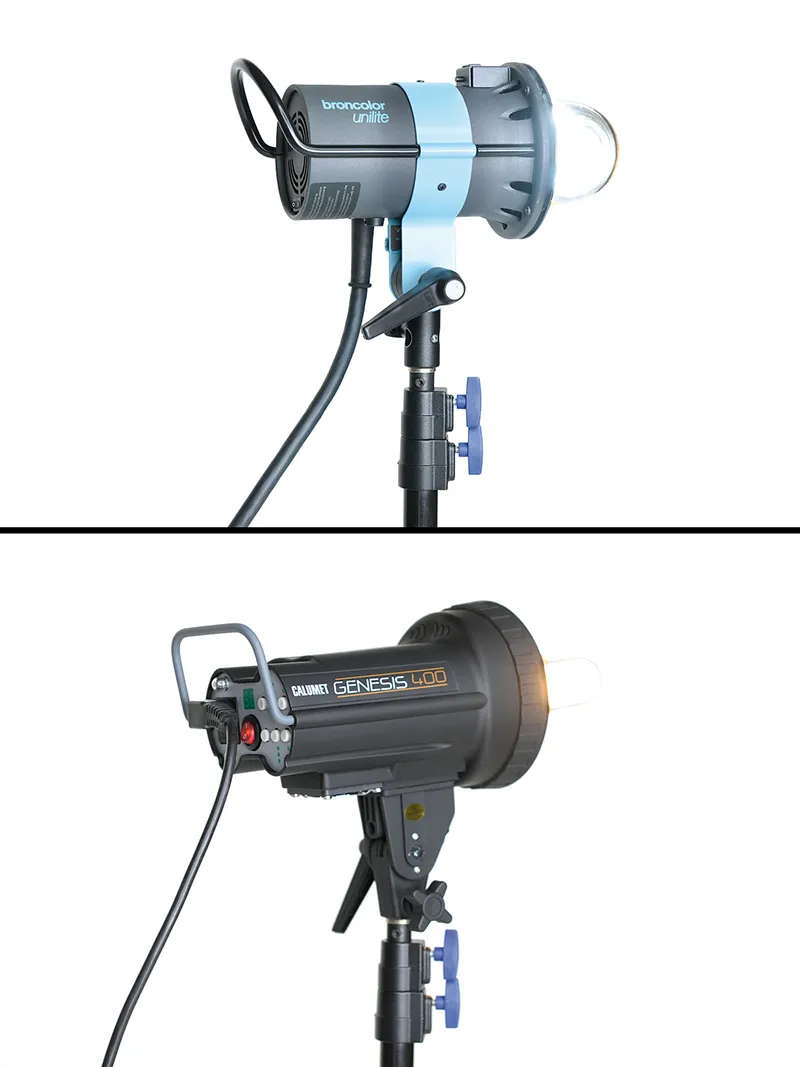
(Photo ©: Jens Brüggemann - www.jensbrueggemann.de)
Figure 4.19: It is not enough for a generator to have several light connections (here: 3, top right on the generator). These should also be individually adjustable (here at the top left of the device). In this model, all three connections are completely freely adjustable, both individually and in the total output for all together. For this reason, there are 4 power regulators in the form of buttons, each with an associated display: one for each of the 3 connections and one overall regulator for the total power. The "Pocket Wizard Plus II" radio trigger is attached to the generator.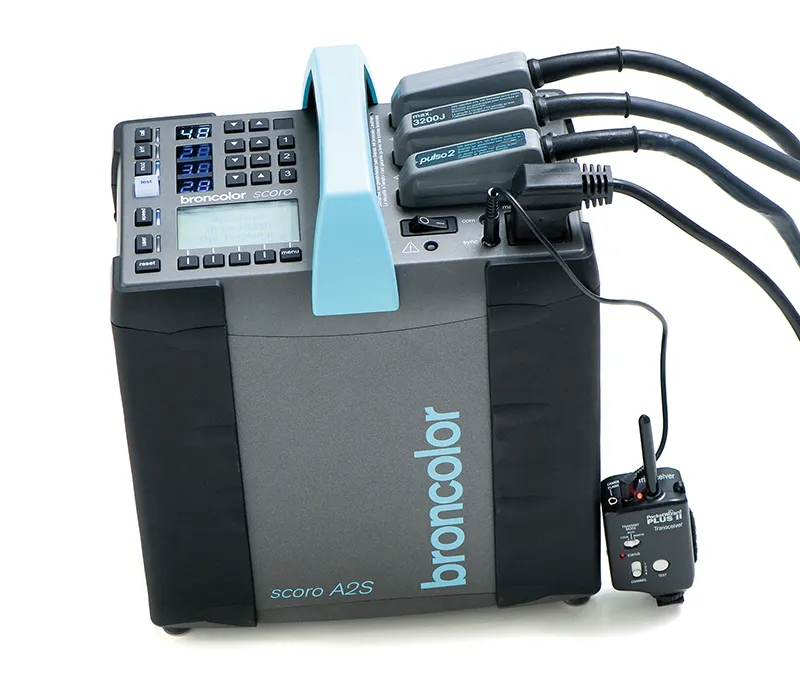
(Photo ©: Jens Brüggemann - www.jensbrueggemann.de)
4.13 Additional functions
Not only the visible functions of the devices are important, but also the many invisible ones, such as the proportionality of the modeling light to the flash (see part 7 of this tutorial) and the thermal protection, which protects the flash system from damage due to overheating (by temperature-controlled fans or by premature shutdown when critical temperatures are reached).
The internal power reduction during down-regulation is also a useful function that eliminates the need for manual flashing, as was the case with older models.
It is precisely these invisible but important functions that make a superficial comparison when buying flash units impossible. Due to the amount of investment required when buying a flash system, I therefore strongly recommend that you take a close look at the range of functions of the flash systems in question - and focus on quality rather than just price.
Tip
As more and more photographers want to use their flash system flexibly, they are looking for solutions where one unit covers all requirements. But do these "egg-laying woolly milk sows" really exist? We will look into this question in the next chapter 5: "Flash units for indoor and outdoor use".
